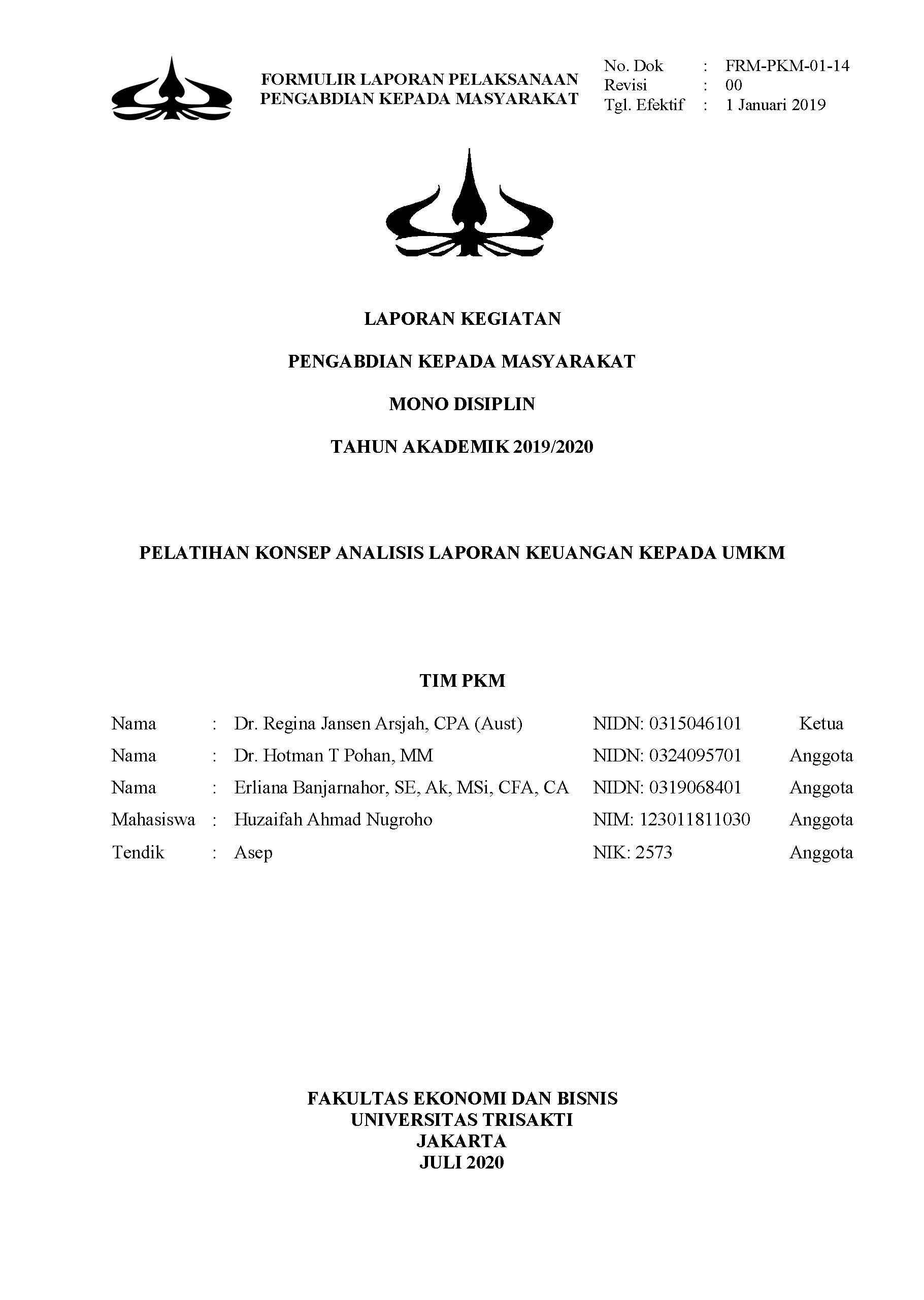Pelatihan konsep analisis laporan keuangan kepada UMKM



Badan Korporasi : -
Kata Kunci : concept of financial statement analysis, financial reports, SMEs
Subyek : Financial statements;Small business - Finance
Penerbit : FEB - Usakti
Kota Terbit : Jakarta
Tahun Terbit : 2020
| No. | Nama File | Hal. | Link |
|---|---|---|---|
| 1. | 2020_PKM_FEB_Pelatihan-Konsep-Analisis_Halaman-Judul.pdf | ||
| 2. | 2020_PKM_FEB_Pelatihan-Konsep-Analisis_Pengesahan.pdf | ||
| 3. | 2020_PKM_FEB_Pelatihan-Konsep-Analisis_Bab-1_Pendahuluan.pdf | ||
| 4. | 2020_PKM_FEB_Pelatihan-Konsep-Analisis_Bab-2_Pelaksanaan-Kegiatan.pdf |
|
|
| 5. | 2020_PKM_FEB_Pelatihan-Konsep-Analisis_Bab-3_Kelayakan-Perguruan-Tinggi.pdf |
|
|
| 6. | 2020_PKM_FEB_Pelatihan-Konsep-Analisis_Bab-4_Hasil-dan-Luaran.pdf |
|
|
| 7. | 2020_PKM_FEB_Pelatihan-Konsep-Analisis_Bab-5_Kesimpulan-dan-Saran.pdf |
|
|
| 8. | 2020_PKM_FEB_Pelatihan-Konsep-Analisis_Daftar-Pustaka.pdf | ||
| 9. | 2020_PKM_FEB_Pelatihan-Konsep-Analisis_Lampiran.pdf |
|
T The development of Small and Medium Enterprises (SMEs) has recently increased every year. In fact, the number has reached 62 million units (BPS data processed in 2017), as well as the largest contributor to the Indonesian economy. SMEs have also proven to be the most resilient in facing the global crisis. Most of the SMEs survived the crisis because the use of resources in the form of raw materials, labor, and market orientation was local. And the number of SME players has increased after the crisis.In business financial management; many SMEs do not carry out formal bookkeeping for their business. The calculation of profit/loss is often done simply without carrying out an adequate cost analysis. For example, businesses that use raw materials or raw materials taken from their own land and involve family members themselves do not include these components as raw material costs and labor costs in the formal calculation of costs. These calculations are contained in the profit/loss statement, financial position report, changes in the capital which are financial statements. In this case, for MSMEs, the financial statements refer to the Financial Accounting Standards for Entities without Publik Accountability (SAK-ETAP).There are benefits obtained from this PKM training, so it is necessary to carry out PKM on an ongoing basis this Financial Statement Analysis Concept.
T The development of Small and Medium Enterprises (SMEs) has recently increased every year. In fact, the number has reached 62 million units (BPS data processed in 2017), as well as the largest contributor to the Indonesian economy. SMEs have also proven to be the most resilient in facing the global crisis. Most of the SMEs survived the crisis because the use of resources in the form of raw materials, labor, and market orientation was local. And the number of SME players has increased after the crisis. In business financial management; many SMEs do not carry out formal bookkeeping for their business. The calculation of profit/loss is often done simply without carrying out an adequate cost analysis. For example, businesses that use raw materials or raw materials taken from their own land and involve family members themselves do not include these components as raw material costs and labor costs in the formal calculation of costs. These calculations are contained in the profit/loss statement, financial position report, changes in the capital which are financial statements. In this case, for MSMEs, the financial statements refer to the Financial Accounting Standards for Entities without Publik Accountability (SAKETAP). There are benefits obtained from this PKM training, so it is necessary to carry out PKM on an ongoing basis this Financial Statement Analysis Concep